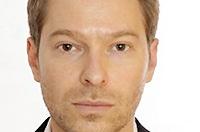While Porsche's global sales took a hard hit in March and April because of the coronavirus outbreak, the Volkswagen Group subsidiary is now seeing a "very strong" recovery. "That gives me cause for optimism," Porsche sales boss Detlev von Platen said. Despite the positive indicators, von Platen said the pandemic has been a game changer for the company. He explained why in an interview with Automotive News Europe Associate Publisher & Editor Luca Ciferri and Correspondent Christiaan Hetzner.

July 14, 2020 04:00 AM
Featured Stories
Nissan North America targets nearly $2 billion in cost cuts to shift out of ‘crisis mode’
The sweeping belt-tightening effort will involve hundreds of job cuts in the U.S. and factory consolidation in Mexico.
Latest News
Staying current is easy with newsletters delivered straight to your inbox.
See More in Automakers
Staying current is easy with newsletters delivered straight to your inbox.









